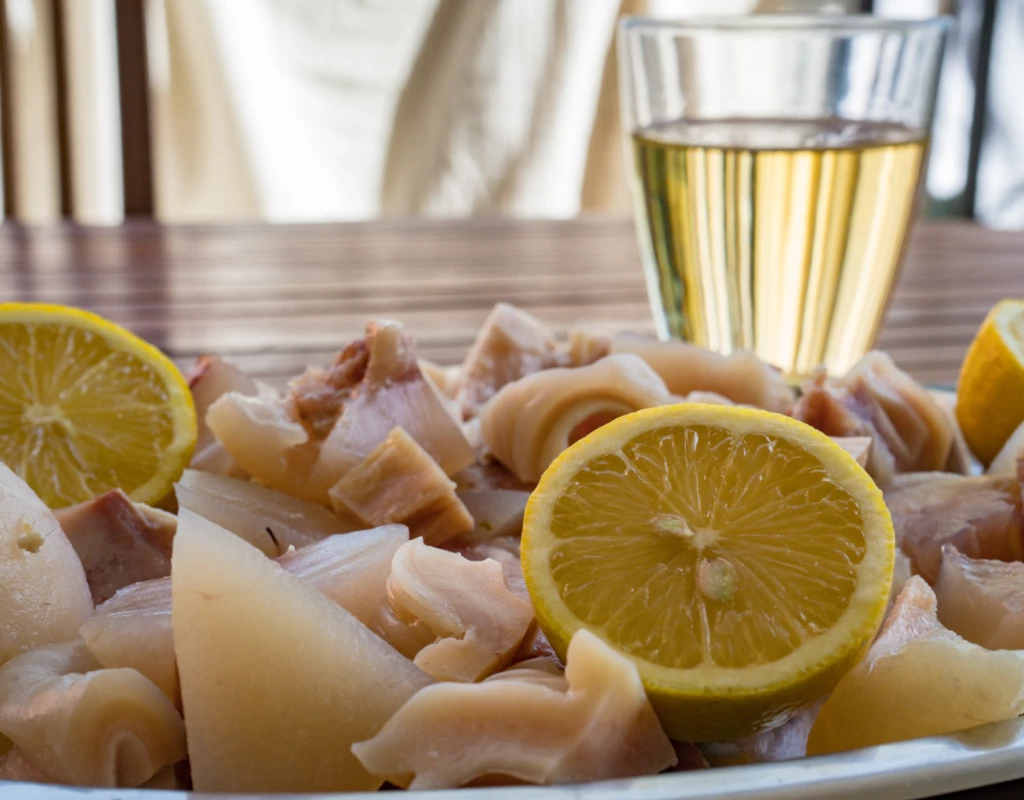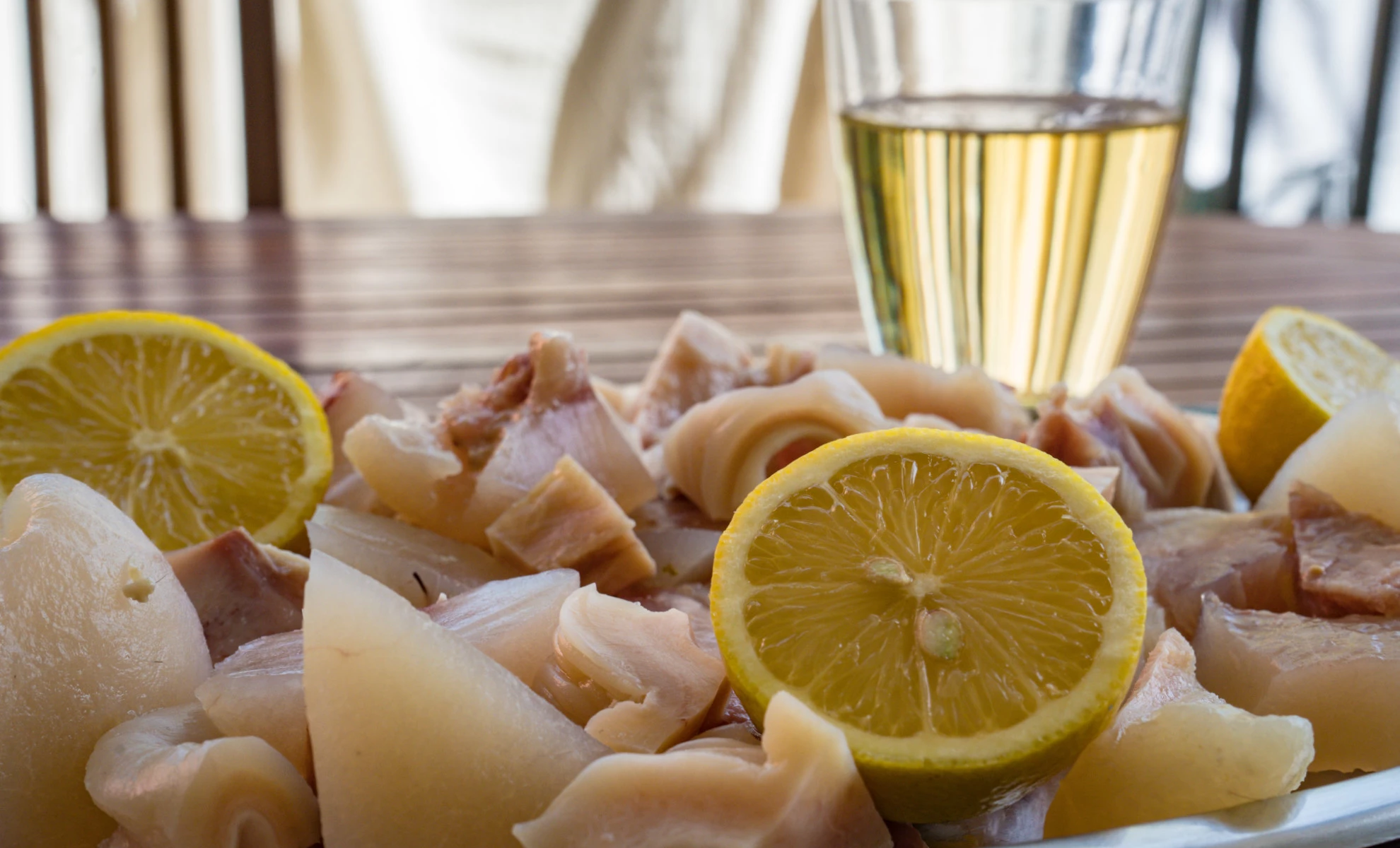Once upon a time there was the carnacuttaro. Until a few decades ago, on the streets of the popular districts of Naples, it was common to find peddlers who sold boiled, cooled and served entrails in the most disparate ways. Hence the definition of carnacuttaro: literally the one who cooks meat.
The classic "bancarella" of 'o pere e 'o musso | Ph. Enrico Nocera - Trentaremi
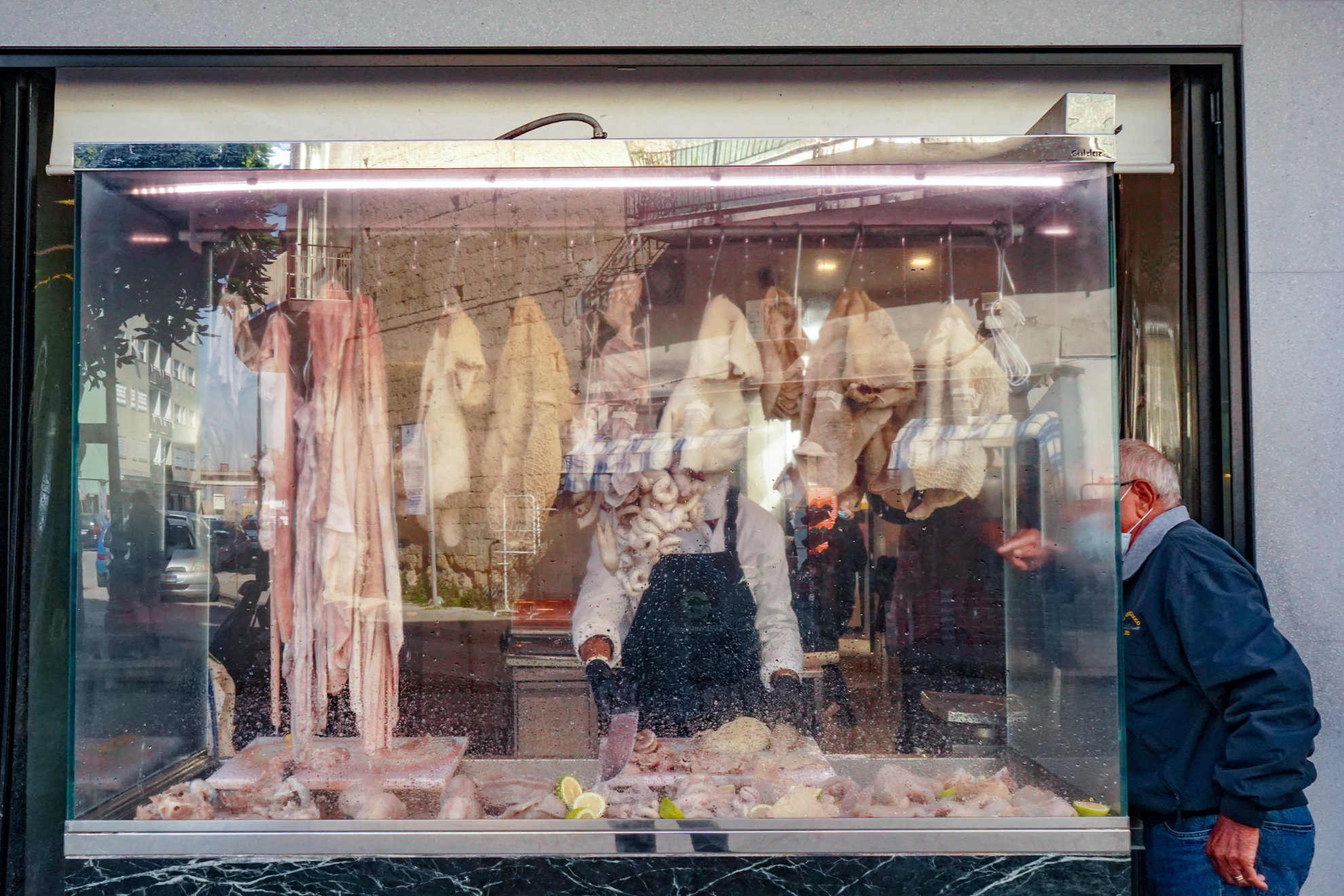
One of the most popular products among these ancient keepers of the humble tradition was the 'o pere e 'o musso. Pork feet and calf's snout, which were commonly regarded as food scraps, were put together and cooked. The piece of meat was shaved, boiled, cooled using ice and then seasoned with salt and lemon. Even today the tradition is alive in the streets of the Neapolitan downtown, as well as in many towns of the populous province.
“His voice is as follows: Tengo o musso, o pere 'e puorco, o callo 'e trippa!”Antonio Altamura describes the cries of a carnacottaro in his “Dizionario dialettale napoletano”
Consumed both on the plate and in the classic takeaway cuoppo (paper cone full of food), 'o pere 'o e musso boasts a centuries-old history: it was the early nineteenth century when the monzù (cooks) of the court, French chefs called by Queen Maria Carolina to introduce the art of transalpine cuisine to the Bourbon Kingdom, they used to eliminate the humblest parts of the ingredients used in the kitchens.
The pig's foot still whole | Ph. Enrico Nocera - Trentaremi
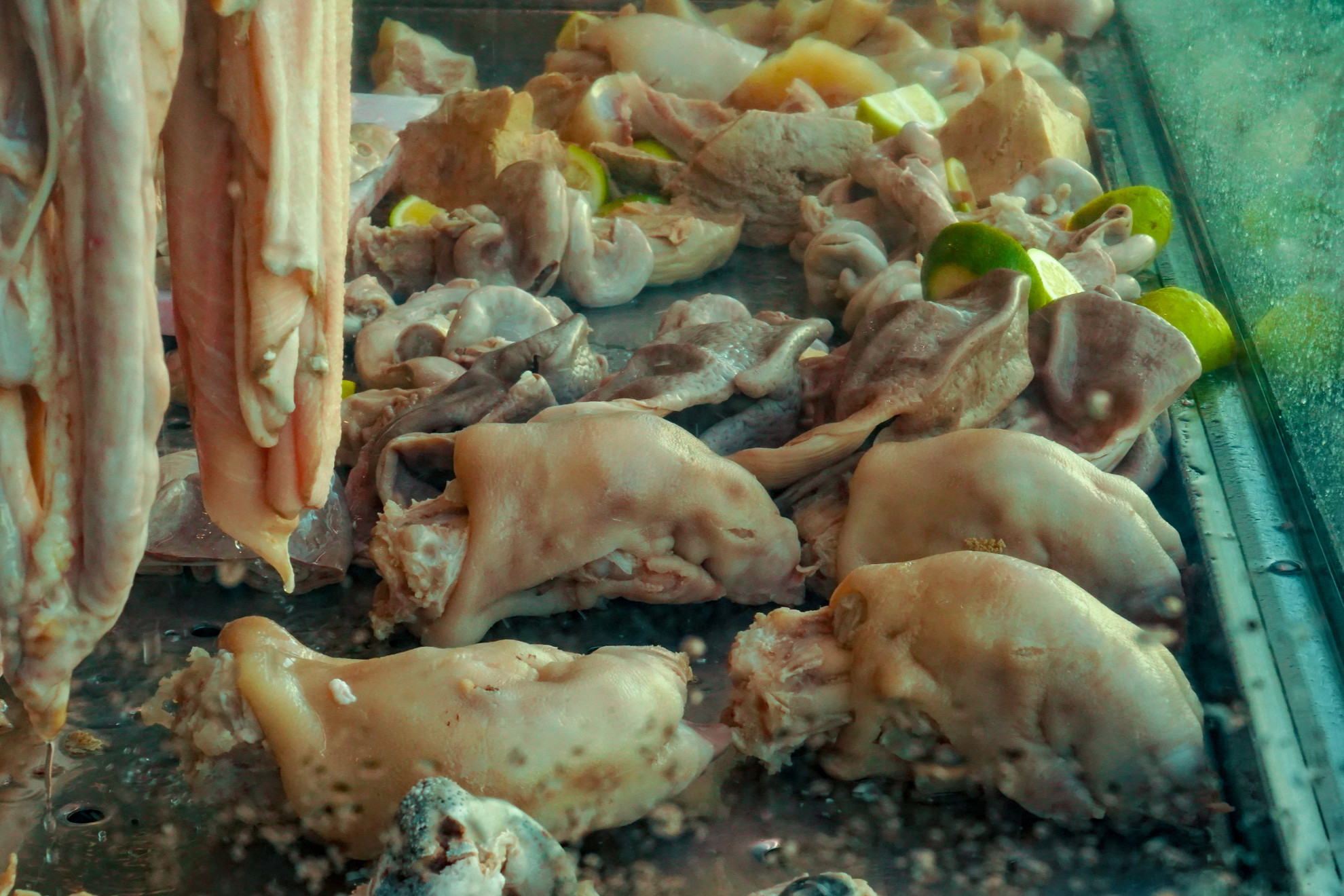
These ingredients were - without too many formalities - thrown to the people, in particular to the women who came down from the popular neighborhoods and crowded the Largo di Palazzo to get what was still food. Voilà les entrailles, the French shouted. Here are the guts. Les entrailles in Neapolitan dialect became the “Zendraglie”. And since then this word was used to define the women themselves who went to Largo di Palazzo to get food.
“Non m’haie legato, strega fattocchiara, perchiepetola, brutta zantragliosa?”
"Haven't you tied me up, witch, sorceress, gossip, ugly peasant?"Ciullo rails against Cenza in Giulio Cesare Cortese's “Vaiasseide”
Gradually, during the late nineteenth and throughout the twentieth century, 'o pere e 'o musso went from being a waste product to become an authentic cult of Neapolitan popular cuisine. A tasty portion of meat seasoned with salt and lemon is worth tasting, immersing yourself in the lively heat of the narrow streets of Naples, from Pignasecca to Porta Capuana. A popular cuisine recipe that, over the years, has brought back other typical dishes of the humble tradition, such as the sautéed soup (made of entrails and tomato and otherwise called strong soup, due to its typical spiciness) or the classic tripe.
'O pere e 'o musso with white wine: an excellent pairing | Ph. Enrico Nocera - Trentaremi
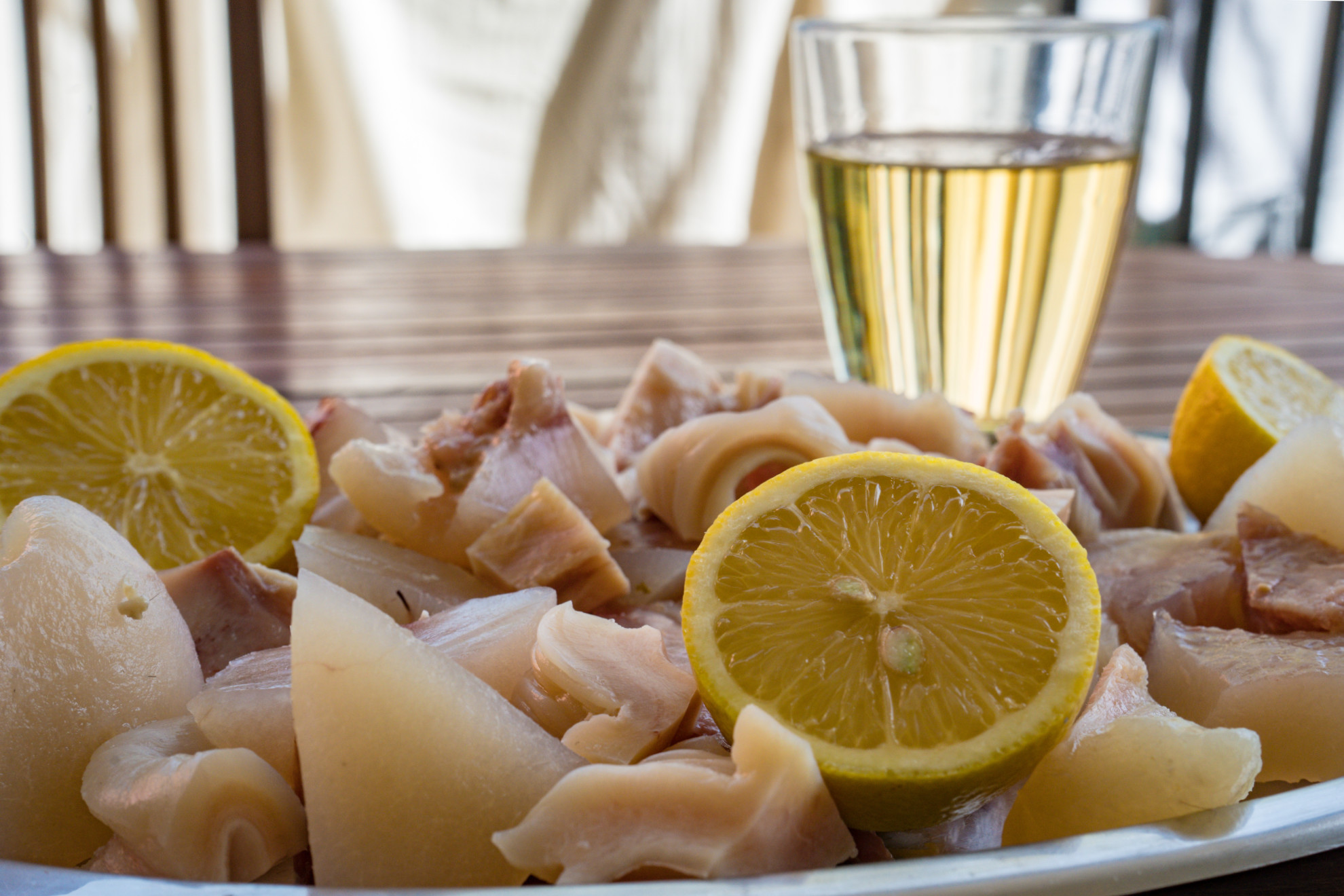
The classic portion of pere e musso, consisting of just the pig's leg and the calf's snout, can be combined with other ingredients, such as the uterus of the cow, the rectum or the four stomachs of the calf itself, the feet of the kid. Is it food for strong stomachs? To read it, maybe yes. In practice, we are talking about tasty and nutritious ingredients, which not surprisingly were used - in the past - to fill the stomachs of less well-off families. Popular cuisine, however, is well known: it is humble, but never gives up on taste. 'O pere e 'o musso are no exception!
